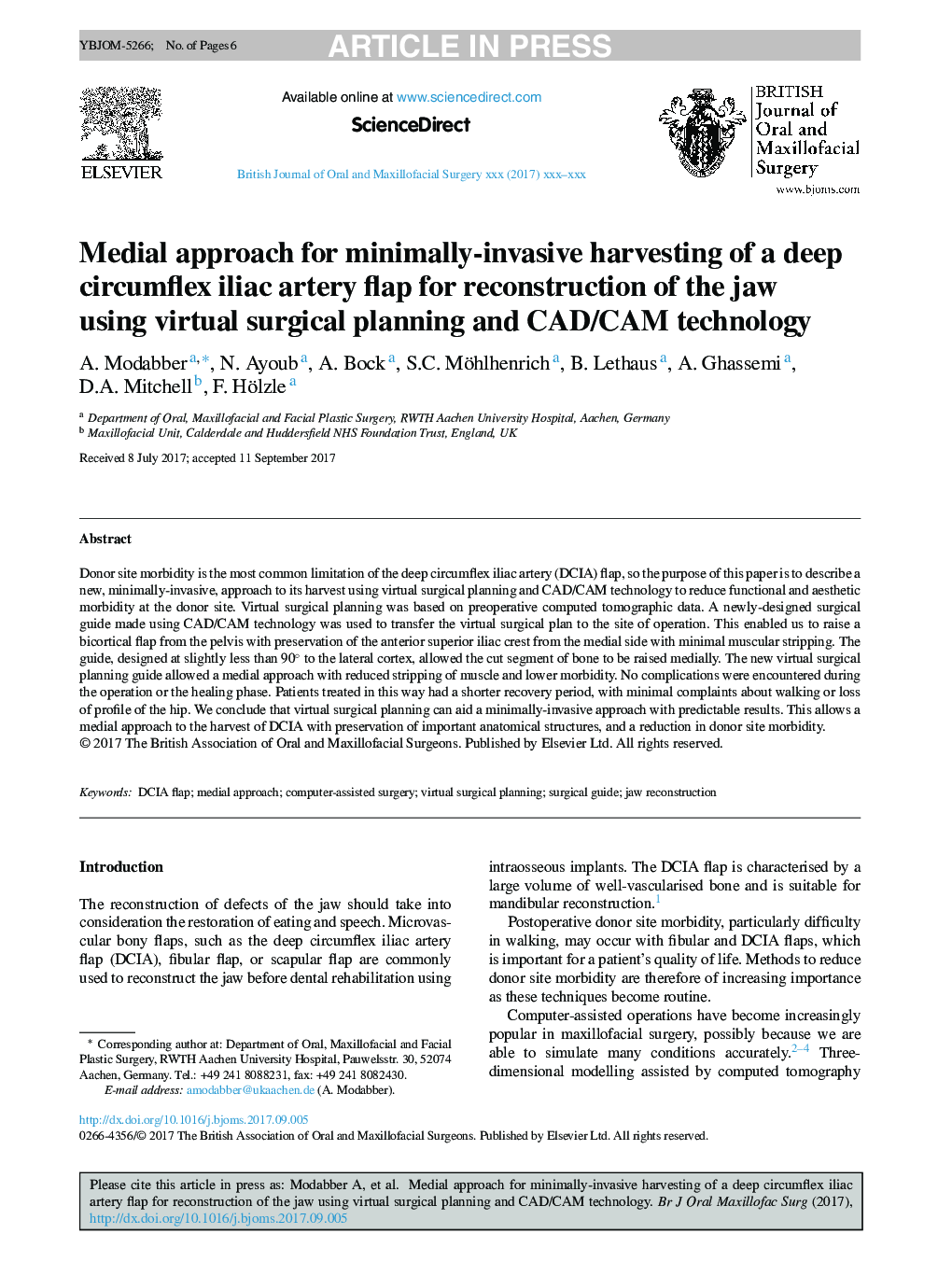| Article ID | Journal | Published Year | Pages | File Type |
|---|---|---|---|---|
| 8696952 | British Journal of Oral and Maxillofacial Surgery | 2017 | 6 Pages |
Abstract
Donor site morbidity is the most common limitation of the deep circumflex iliac artery (DCIA) flap, so the purpose of this paper is to describe a new, minimally-invasive, approach to its harvest using virtual surgical planning and CAD/CAM technology to reduce functional and aesthetic morbidity at the donor site. Virtual surgical planning was based on preoperative computed tomographic data. A newly-designed surgical guide made using CAD/CAM technology was used to transfer the virtual surgical plan to the site of operation. This enabled us to raise a bicortical flap from the pelvis with preservation of the anterior superior iliac crest from the medial side with minimal muscular stripping. The guide, designed at slightly less than 90° to the lateral cortex, allowed the cut segment of bone to be raised medially. The new virtual surgical planning guide allowed a medial approach with reduced stripping of muscle and lower morbidity. No complications were encountered during the operation or the healing phase. Patients treated in this way had a shorter recovery period, with minimal complaints about walking or loss of profile of the hip. We conclude that virtual surgical planning can aid a minimally-invasive approach with predictable results. This allows a medial approach to the harvest of DCIA with preservation of important anatomical structures, and a reduction in donor site morbidity.
Related Topics
Health Sciences
Medicine and Dentistry
Dentistry, Oral Surgery and Medicine
Authors
A. Modabber, N. Ayoub, A. Bock, S.C. Möhlhenrich, B. Lethaus, A. Ghassemi, D.A. Mitchell, F. Hölzle,
